Barn No. 3
After 1910, the US Government changed the health regulations for the production and handling of milk and this required new barn designs. The new barns were designed to house cows on a washable concrete floor in steel pipe stanchion. Steel ducts, encased in wood lead from the ground floor of the barns on the Anna Dean Farm up to the coupolas on top of the roof. This system provided fresh air for the cows and a series of windows gave light to the stanchion areas. In addition to these Government requirements the cow barns on the Anna Dean Farm also featured windows that opened to allow for cross ventilation. O. C. Barber also installed large electric fans to help circulate air within the cow barns to furthur keep the cattle comfortable.
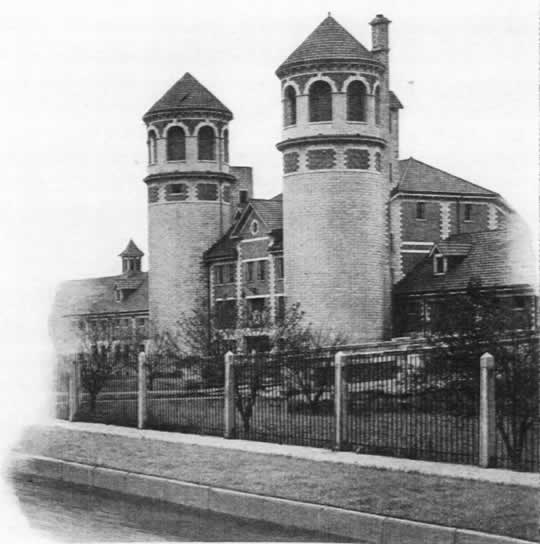
Built in 1912 as one of the last barns on the Anna Dean Farm, Barn No 3, was simply put, a cow palace. Heated to protect the cattle in the winter and cooled by electric fans in the summer, Barn No 3 was the largest, most opulent barn in the world. In 1912 Barn No 3, alone, cost Ohio C. Barber over $1,000,000 to construct. However in 1912 a US dollar had 15 times the buying power it does in the 21st century. In terms of our money imagine a barn costing $15,000,000 to build and you should be able to understand the size and scope of this magnificent building. Each wing of Barn No. 3 was longer than entire length of Barn No 1, the Piggery or the Brooder Barn. In late 1912, Ohio C. Barber wrote a letter to his daughter Anna in Chicago to describe Barn No. 3, and simply said, "You should see the new barn, its a Dusey!"
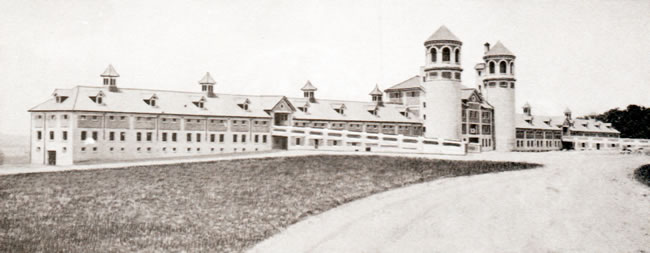
O. C. Barber used Star Line Equipment on the Anna Dean Farm exclusively. This photo of Barn No 3 taken looking north west shows this mammoth barn just after construction. This photo was the pride of the Star Line Equipment catalog, and this catalog lists the barn as costing over $1,000,000.
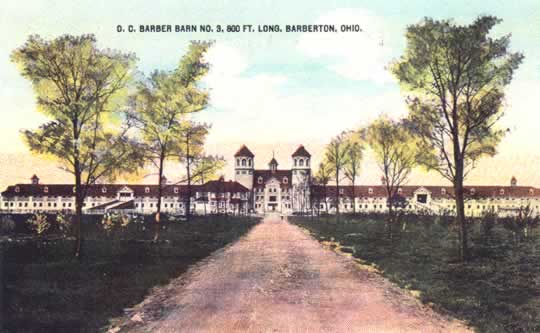
This is a postcard view of Barn No. 3. Although not really quite 800 feet long, with its actual length being 751 feet.
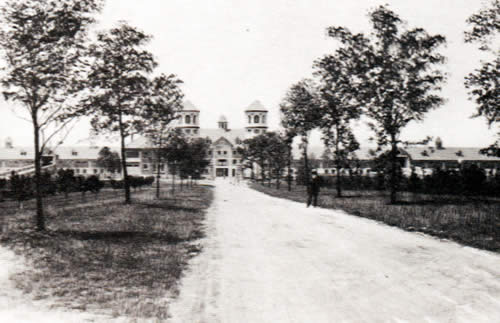
It was nearly impossible to get a photograph of Barn No
3 due to its extreme length. Here we are looking west on Anna Dean Lane
just west of the Mansion service drive at Barn No 3. Notice that Anna
Dean Lane is lined with elm trees, which Mr. Barber has had transplanted.

An aerial view looking down on Barn No 3. This magnificent building was built at a cost of over $1,000,000 in 1912.

Another full page photo from the Star Line equipment catalog shows the interior of Barn No 3, just after construction was completed in 1912. At this point of time the interior of the Barn No 3 is pristine, as no cows have yet been moved into the building. Barn No 3 had 150 individual pens for the cattle.

One of the great attributes to any of the Anna Dean Farm
barns was their cleanliness. Here again we see the interior of Barn
No. 3 and the immaculate condition in which it was kept on the inside.

The second floor hay mow, standing in the center of Barn No 3 and looking south toward one end of the building.
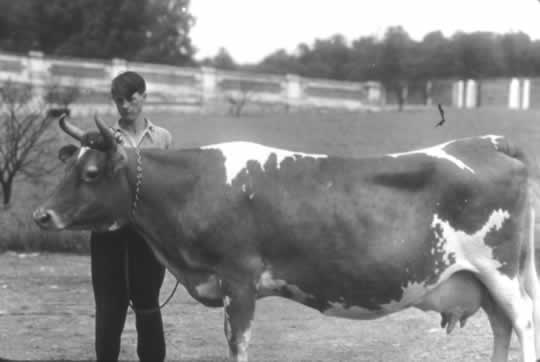
Spotswood Daisy Pearl, the second greatest cow on the Anna Dean Farm and the queen of Barn No 3.
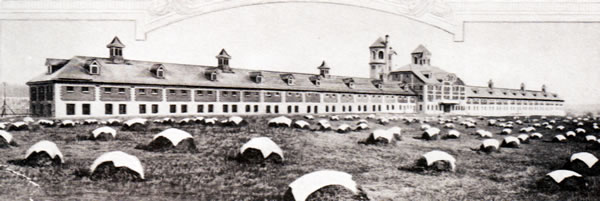
Barn No 3 as seen near Portsmouth Ave, looking at the
West side. The large area between the silos on the West side of the
barn is the dormitory for single men working on the Anna Dean Farm.
Barn No 3's dormitory and the Hotel housed most of the single men on
the Farm. Notice that the recently harvested hay is covered with blankets
to keep it fresh. These hay blankets were each individually monogrammed
ANNA DEAN FARM.
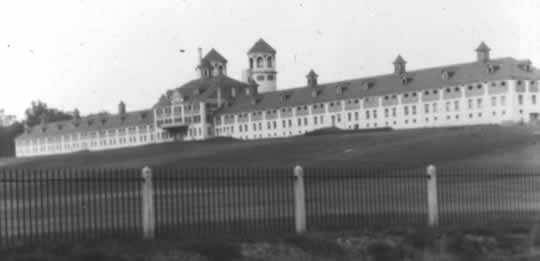
Barn No 3, as viewed from Snyder Ave looking north east. Notice the concrete post and steel picket fence than ran around the western side of the Anna Dean Farm. Also please note the center area on the west side of Barn No 3. This area comprised of a three story dormitory area for single men working on the Anna Dean Farm.
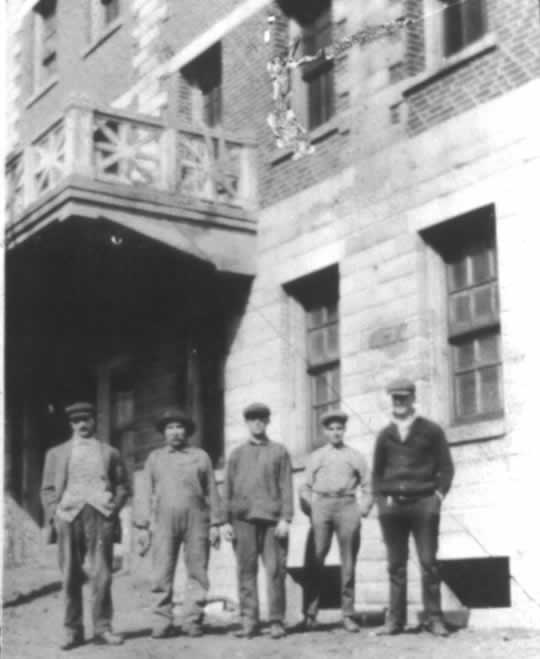
Anna Dean Farm workers pose outside of the dormitory entrance to Barn No 3 in 1913.
![]()